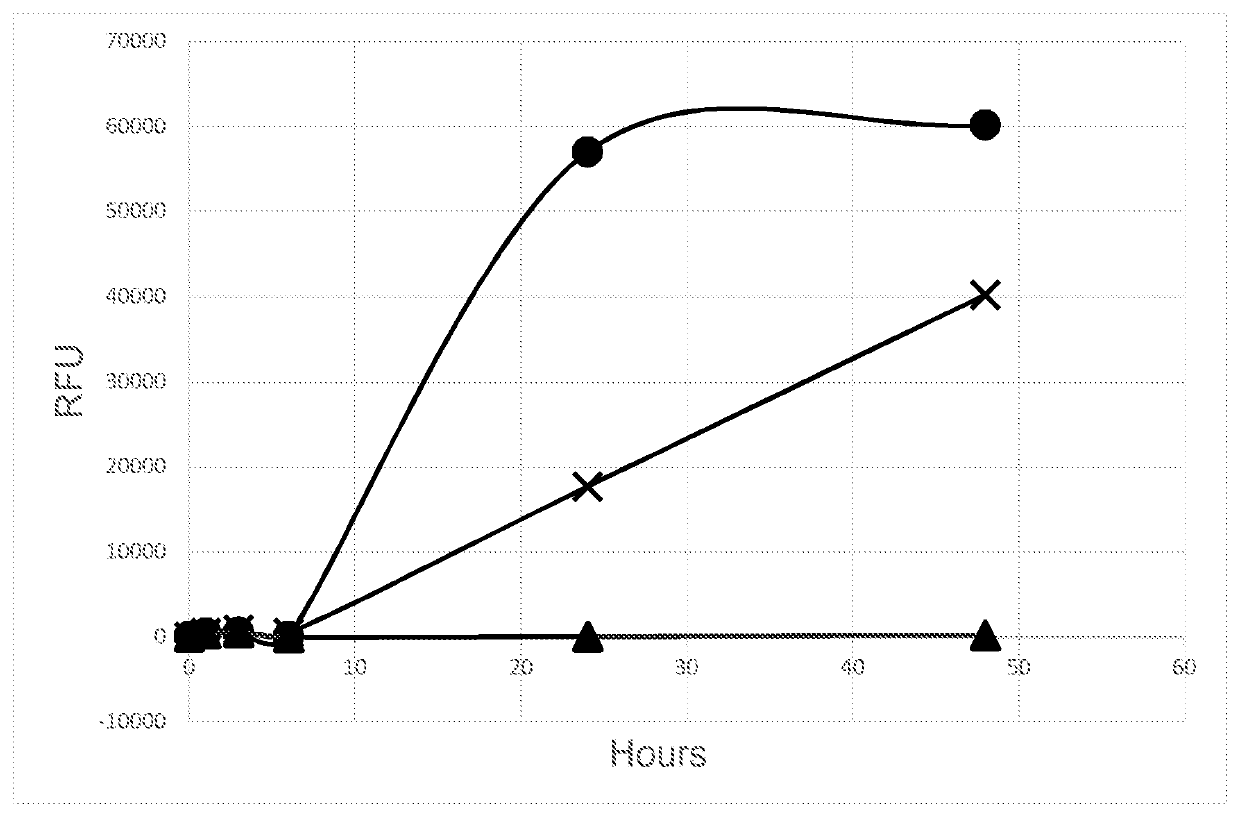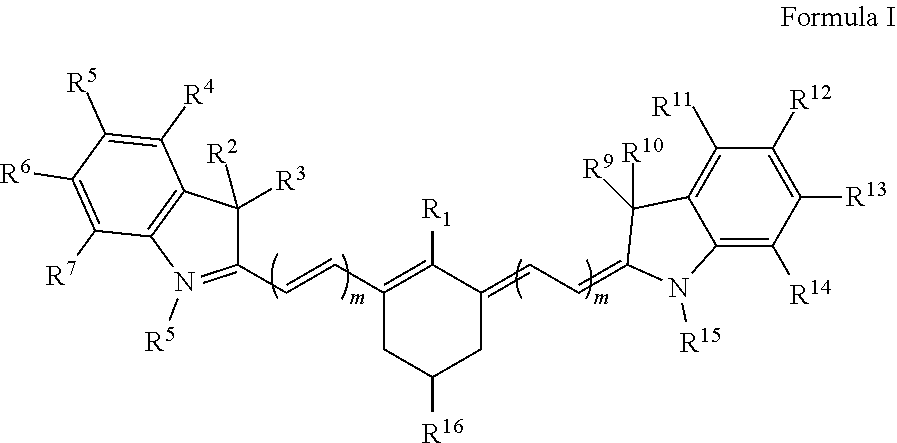Method for detecting food spoilage microbes
a technology for spoilage microorganisms and microorganisms, which is applied in the direction of biochemistry apparatus and processes, analysis by subjecting materials to chemical reactions, peptides, etc., can solve the problems of insufficient sensitivity of monitoring below the 600 nm region, and achieve rapid and specific detection of microorganisms
- Summary
- Abstract
- Description
- Claims
- Application Information
AI Technical Summary
Benefits of technology
Problems solved by technology
Method used
Image
Examples
example 1
[0072]Peptide 1 QC-1-AAAFALAC-IRDye800CW was obtained by standard solid phase peptide synthesis methods. Fluorescent agent IRDye800CW and non-fluorescent agent (quencher) QC-1 were obtained from LI-COR (Nebraska, USA).
[0073]Alcalase, Sigma Aldrich P4860—stock contains 150 mg / mL alcalase.
[0074]Fluorescence was monitored over time using a Cary Eclipse Instrument, settings: Ex. Wavelength: 720 nm; Em. Wavelength: 785 nm; Ex. Slit 10 nm; Em. Slit 10 nm; Ave. Time 0.1 s; Ex. Filter and Em. Filter: Auto
[0075]100 μL of a milk or blank (sodium phosphate buffer, pH 8) was diluted into 1.5 mL milliQ water. 100 μL of the diluted sample was added to 1 mL, 0.1M sodium phosphate buffer pH 8, 1.9 mL MQ water, 30 μL peptide 1.10, 2.5 or 0.5 ng / μL of a 123.8 ng / μl solution of Alcalase, a protease secreted by Bacillus licheniformis, a microorganism found in raw milk.
[0076]Optionally, the milk was pH adjusted to remove acid insoluble proteins. 1 mL of milk was pH adjusted to pH 4.6 by 0....
example 2
[0080]A experiment was conducted to assess the selectivity of the present invention for food spoilage microbes.
[0081]Bacterial cultures (Pseudomonas aeruginosa, Bacillus Cereus, Ochrobactrum anthropic) were grown overnight at 35° C. on blood agar plates and identification was confirmed using Maldi-TOF (MALDI Biotyper 2.0, Bruker Daltonics, model: Microflex LT, software version 4.1.60)
[0082]From the grown colonies, 0.5 McFarland suspensions were prepared in phosphate buffered saline (pH 7.4). 0.5 mL of these suspensions were used to spike 5 mL UHT milk that had been pH adjusted as described above. UHT milk spiked with 75 ng / ml alcalase was used as positive control. A milk sample without alcalase and not spiked with bacterial suspensions was used as negative control.
[0083]All milk samples were incubated at 35° C., until measurements were taken using a hand held fluorimeter (DeNiro NIR Flurometer, DetactDiagnostics BV, The Netherlands), at 0, 1, 3, 6, 24 and 48 hours. The RFU for the c...
PUM
| Property | Measurement | Unit |
|---|---|---|
| pH | aaaaa | aaaaa |
| absorption wavelength | aaaaa | aaaaa |
| emission wavelength | aaaaa | aaaaa |
Abstract
Description
Claims
Application Information
 Login to View More
Login to View More - R&D
- Intellectual Property
- Life Sciences
- Materials
- Tech Scout
- Unparalleled Data Quality
- Higher Quality Content
- 60% Fewer Hallucinations
Browse by: Latest US Patents, China's latest patents, Technical Efficacy Thesaurus, Application Domain, Technology Topic, Popular Technical Reports.
© 2025 PatSnap. All rights reserved.Legal|Privacy policy|Modern Slavery Act Transparency Statement|Sitemap|About US| Contact US: help@patsnap.com



